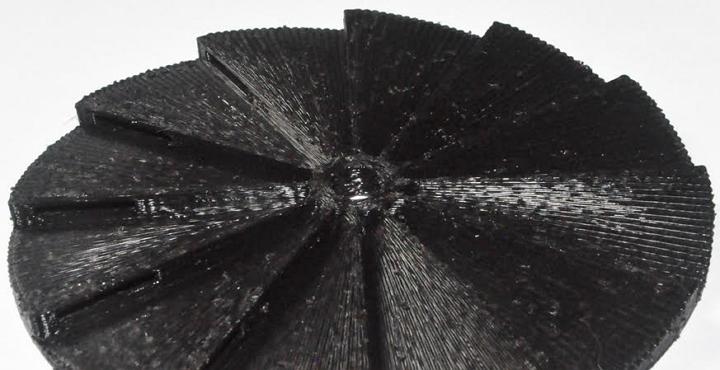
“The unique feature of these reactors is the dispersion plate, which cannot be easily injection molded or milled from acrylic,” Tom Blaha, the founder of Marine Biosystems, told Reef Builders. “When water is passed through the plate, the shape of the plate, combined with the radially spaced vertical outlet holes, forces the water under the pellets in a broad shearing sheet. The weight of stationary pellets above forces that sheet to build pressure until it lifts the entire pellet column upward, releasing it from the bottom the reactor. Once its lifted then it begins moving and fluidizes.”
The design of the F5 means very little energy is needed to start the mixing and maintain the motion.
3D printing allowed the Chardon, Ohio-based Marine Biosystems team the ability to produce one-off parts, while simultaneously being able to scale for the later demands of mass production.
The company says that the Marine Biosystems F5 Reactors “are the first commercially available biopellet reactors made up of additive manufactured (3D Printed) components.”
Additive manufacturing allowed the design team to create the patent pending lifting plate design, and the result, they say, is the most efficient reactor on the market. The reactor is capable of “fluidizing” more than 400 ml of biopellets with a very small 67 GPH pump, and the assembly itself fits within a 3″ x 5″ footprint within the tank. The F5 fluidizing plate forces water under the pellets to create a high pressure zone of spinning water within the chamber.
The rotating column of water created by the F5 means the pellets ride in that column, there are no dead spots.
The top and bottom plates were printed in ABS Plastic and then attached to an acrylic reaction chamber.
What do you think of this aquarium system designed with 3D printing? Let us know in the Marine Biosystems F5 forum thread on 3DPB.com. Check out the F5 in action in the video below.